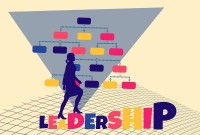- Home
- Business Processes
- Industry Knowledge
- Aerospace Industry
- Automotive Industry
- Banking Domain
- BFSI Industry
- Consumer/ FMCG Industry
- Chemicals Industry
- Engineering & Construction
- Energy Industry
- Education Domain
- Finance Domain
- Hospitality Domain
- Healthcare Industry
- Insurance Domain
- Retail Industry
- Travel and Tourism Domain
- Telecom Industry
- Leadership Skills
- eLearning
- Home
- Leadership
- Creativity Tools
- Emergent Leadership
Emergent Leadership
Emergent leadership occurs when a group member is not appointed or elected as leader, but rather that person steps up as the leader over time within-group interactions. Have you ever faced challenges in getting accepted into your new role of position as a leader? Groups don't automatically accept a new "boss" as a leader. Emergent leadership is what you must do when taking over a new group. Learn more about emergent leadership.
What is Emergent Leadership?
Have you ever noticed that the person who has been assigned to a leadership position does not always become the real leader in spite of having a formal leadership position in an organization? Similarly there exist informal leaders because of the way they are treated, their commands and directions followed, the respect they command, the way other group members respond to them. When others perceive an individual as the most influential member of a group or an organization, regardless of the individual’s title, the person is exhibiting emergent leadership. How a group member emerges and maintains a leadership position, has been a subject of study for more than a century now and since then various phenomena, theories, and techniques of emergent leadership have been identified, developed, and advocated. The individual acquires emergent leadership through the support and acceptance of other people in the organization and it is the “emergent leader” who is most respected and most followed in any leadership setting.
Theories on Emergent Leadership:
1. Valence model of Emergent Leadership:
This model is based on Tuckman's (1965) group-development sequence proposed by Stein, Hoffman, Cooley, & Pearse in 1979. According to this model, the process of emergent leadership passes through three distinct stages; Orientation, Conflict, and Emergence. During the orientation stage potential leaders announce their candidature, during the conflict stage there is more than one leader competing for the same emergent leadership position and finally, in the emergence stage, group members willingly start following and obeying the leader who has passed the "emergence threshold."
2. Theory of Idiosyncrasy Credit:
This theory was proposed by Hollander (1958, 1961) where he theorized that the group member who emerges as the leader is perceived by other group members as meeting expectations that the group has for the leader. The more leaders are believed to meet the groups' expectations, the more leaders accumulate credits. Thus, leaders both assert their influence and have their influence accepted as a result of the credits they earn. If the leader does not innovate and does not conform in accordance with the group's expectations, the leader will lose credits. If enough credits are lost, then the leader can be replaced by another group member.
3. Social Identity Theory:
This theory provides a unique perspective on leadership emergence. According to this theory, leadership emergence is the degree to which a person fits with the identity of the group as a whole. As groups develop over time, a group prototype also develops. Individuals emerge as leaders in the group when they become most like the group prototype. Being similar to the prototype makes leaders attractive to the group and gives them influence with the group.
4. Neo-Emergent Theory:
The neo-emergent leadership theory (from the Oxford school of leadership) supports that leadership is created through the emergence of information by the leader or other stakeholders, not through the true actions of the leader himself. Leaders can only be recognized after a goal is met, and that follower’s perception of leaders is heavily influenced by the accounts of how those goals were accomplished.
Characteristics of Emergent Leadership:
1. This type of leadership emerges over a period through communication, they are outspoken and perceived by others as contributing great ideas
2. Emergent Leaders are verbally involved with their team members
3. Emergent Leaders seek others’ opinions, are innovative, and seek new ideas
4. Emergent Leaders are more dominant, more intelligent, and more confident about their own performance
Conclusion:
Emergent leadership is a leadership style that is based on creating a collaborative culture that is proven to dramatically increase innovation and profit. Emergent Leaders are armed with persistence and effective communication skills which help them get involved with people, seek information firsthand, and be innovative taking inputs from the entire group. This form of leadership is more adaptable to change and emergent leaders are more effective and have a greater chance of succeeding in any setting.
Related Links
You May Also Like
-
Adaptive leadership is a style of leadership that emphasizes the importance of each and every person and role within the company. Adaptive leadership views the organization as an ever-changing, living organization, where employees can learn, adapt, and grow. Adaptive leaders mobilize people towards a common goal and also have the courage to experiment with new ideas and approaches. Adaptive leadership is the practice of mobilizing groups of people to tackle tough challenges and thrive. Learn how to adopt this style and how to become an adaptive leader!
-
Emergent leadership occurs when a group member is not appointed or elected as leader, but rather that person steps up as the leader over time within-group interactions. Have you ever faced challenges in getting accepted into your new role of position as a leader? Groups don't automatically accept a new "boss" as a leader. Emergent leadership is what you must do when taking over a new group. Learn more about emergent leadership.
-
Narcissistic leadership is a leadership style in which the leader is only interested in him. Narcissists are good for companies that need people with vision and the courage to take them in new directions. Such leaders sometime might be highly successful, but is it a style to be followed. Learn the various types of narcissistic leadership and the characteristics of such leaders.
-
Narrative leadership is interpreted as the leader who aspires to construct leadership by telling stories. Leadership is a task of persuasion, of winning people’s minds and hearts. Storytelling is thus inherently suited for the task of leadership. Learn about the narrative leadership style and how to use this style to inspire and motivate followers or to manage change.
-
The ten most important qualities that define a good leader are self-awareness, interpersonal and communication skills, ethical values, organizational consciousness, self-confidence, adaptability and flexibility, imagination and creativity, focus & result-orientation, continuous self-development and accountability and ownership for his actions. These ten qualities of leadership every good leader should possess to a certain extent and must continually strive to develop them.
-
What are the functions which a leader does to establish as a leader? What are the activities undertaken by them to become great leaders, rather revolutionary leaders? The most important tasks done by a leader in all situations are defining the vision, mission, and goals, leading the team, administrative functions, motivating followers, decision making and conflict resolution, and continuous development.
-
Understanding of how individuals of different cultures interact with each other is very important. Not all individuals can adapt to the leadership styles expected in a different culture whether that culture is organizational or national. In a fast-paced business environment, developing a richer understanding and sensitivity to other cultures is a skill that leaders must possess. Learn to be effective in a cross-cultural setting.
-
Appreciative leaders encourage contributions from those around them and facilitate the discussion to mutually solve problems. Understand the concept of Appreciative Leadership and learn about tools to create and ask powerful questions - that lead to new discoveries and possibilities. Instead of focusing on what’s wrong in the workplace, learn about, and build upon what works. Learn in this article the art to apply appreciative inquiry to specific situations and challenges at your workplace.
-
Authentic leadership is an approach to leadership that emphasizes building the leader's legitimacy through honest relationships with followers which value their input and are built on an ethical foundation. The authentic leader acts upon his or her values and beliefs, and inspires others to do the same, is committed to know and develop oneself. Are you committed to developing yourself; know your motivations and the purpose of your leadership? Read this article to know more about authentic leadership style and discovering your authentic self.
-
Bureaucratic leadership relies on a clear chain of command and strict regulations. Bureaucratic leadership style is a very decent style for work involving serious safety risks, such as handling toxic substances, moving large objects. The focus is on compliance with rules and laid down procedures to make sure that the group is doing their job correctly and safely. Learn some advantages and disadvantages of this style and situations in which this style could prove to be effective.
Explore Our Free Training Articles or
Sign Up to Start With Our eLearning Courses

About Us
Learning
© 2023 TechnoFunc, All Rights Reserved










